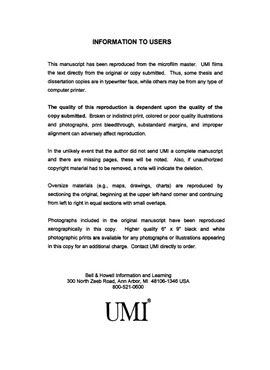| dc.contributor.advisor | Cifelli, Richard, | en_US |
| dc.contributor.author | Goldberg, Patricia. | en_US |
| dc.date.accessioned | 2013-08-16T12:31:09Z | |
| dc.date.available | 2013-08-16T12:31:09Z | |
| dc.date.issued | 2000 | en_US |
| dc.identifier.uri | https://hdl.handle.net/11244/6029 | |
| dc.description.abstract | Finally, taxonomic associations were examined using correspondence analyses. Monte Carlo simulations were performed to determine which taxa were significantly abundant (or absent) at each site. Each family and most mammal species were found to occur in one or more sites in greater than expected abundances; each site had a unique composition of animals, but some sites shared general patterns of association. Ubertaxa and families were found to form three loose associations; a terrestrial assemblage and two distinct aquatic assemblages. Correspondance analyses on taxa based on habitat, diet, and thermoregulation were all significantly non-random, suggesting an ecological basis for the patterns in faunal distribution among sites. | en_US |
| dc.description.abstract | Microsites were found to vary significantly in faunal composition using principal components analyses and Pearson's correlation coefficients. The best resolutions of taxonomic distinctness occurred at the inclusive family level and at the mammal species level. | en_US |
| dc.description.abstract | The faunal composition of the upper Cedar Mountain Formation (Mussentuchit Member) in Emery County, Utah, is herein examined based on fossils and associated data from twelve microvertebrate fossil localities. | en_US |
| dc.description.abstract | Eleven of the sites examined for sedimentary structures and other geologic features in order to determine depositional environment and energy. Similarity based on geology did not correspond with similarity based on taxonomy, using Mantel tests and Kendall's Tau. Depositional processes, while altering the overall faunal composition in the Mussentuchit Member, apparently operated in a similar manner among sites. | en_US |
| dc.description.abstract | Next, species accumulation curves were plotted by adding taxa from different sites. The number of families and the number of mammal species as yet undiscovered were estimated. While several families are probably still undiscovered in the fauna, nearly all mammal species appear to have been found and sampling in this member has reached the point of diminishing returns. | en_US |
| dc.description.abstract | First, raw abundances were corrected for differences in preservation potential among families, using a weighted abundance of elements method. Biases in preservation strongly favored fishes and crocodiles. These groups were consequently overrepresented in the record, distorting ecological patterns. | en_US |
| dc.format.extent | xvii, 243 leaves : | en_US |
| dc.subject | Paleoecology. | en_US |
| dc.subject | Cedar Mountains (Utah) | en_US |
| dc.subject | Animals Classification | en_US |
| dc.subject | Fossils Classification. | en_US |
| dc.title | Faunal composition, non-marine vertebrates, of the upper Cedar Mountain formation (Cretaceous: Albian-Cenomanian), central Utah. | en_US |
| dc.type | Thesis | en_US |
| dc.thesis.degree | Ph.D. | en_US |
| dc.thesis.degreeDiscipline | Department of Biology | en_US |
| dc.note | Chair: Richard Cifelli. | en_US |
| dc.note | Source: Dissertation Abstracts International, Volume: 61-09, Section: B, page: 4629. | en_US |
| ou.identifier | (UMI)AAI9988305 | en_US |
| ou.group | College of Arts and Sciences::Department of Biology | |
